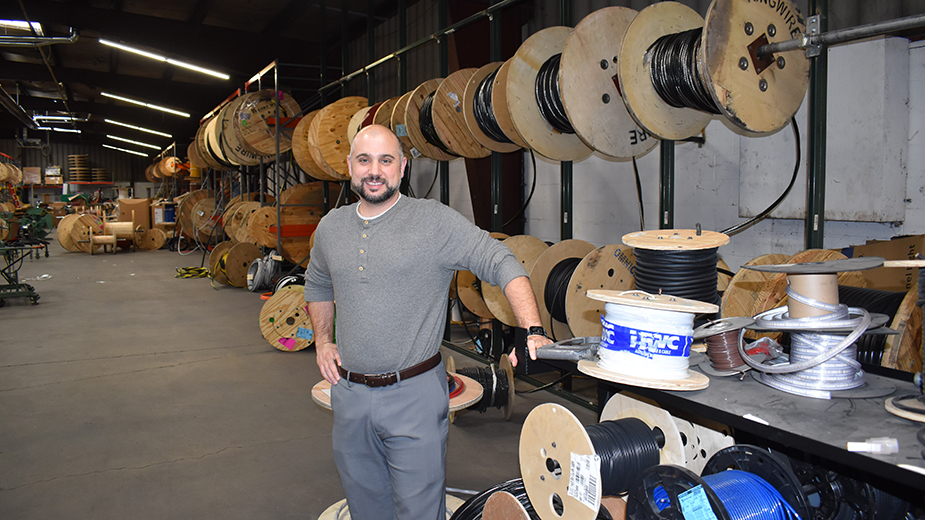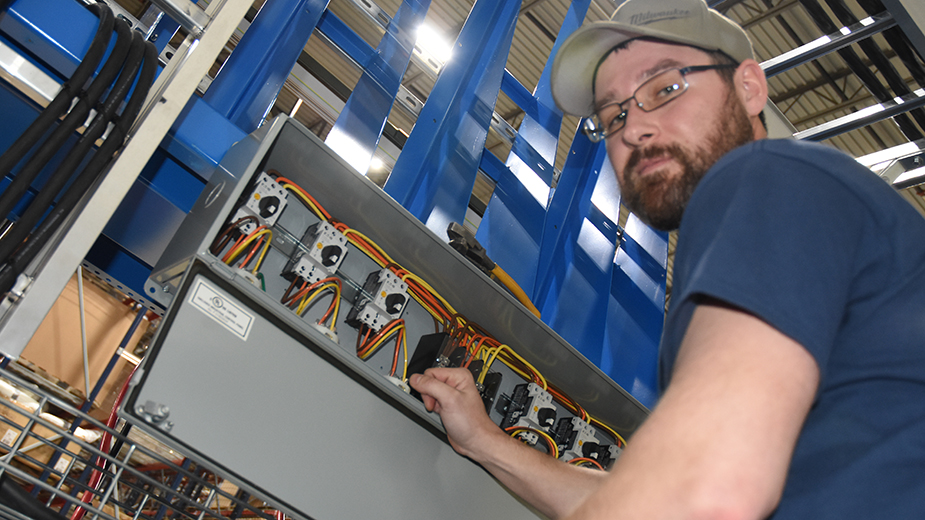YOUNGSTOWN, Ohio – Electrical contractors in the Mahoning and Shenango valleys report there is plenty of work for them but find themselves navigating two main challenges: supply chain issues and a tight labor market.
In some cases, contractors have jobs booked a year or more out, but are finding that the supplies they need to complete projects are backordered for weeks, if not months.
Finding enough help is also an issue.
“We could probably use more workers,” says Eric Carlson, president of Joe Dickey Electric Inc., North Lima.
The company is “still pretty busy” with projects, Carlson says.
Dickey Electric’s current workload includes Akron Children’s Hospital Mahoning Valley’s Boardman campus expansion, work on the fire alarm system at the Ultium Cells plant in Lordstown, the new Ohio Turnpike gate being built west of Warren and the Macy’s regional distribution center in North Jackson, which is being renovated to accommodate a new fulfillment center operation.
“Small project stuff is keeping a lot of guys busy, too,” Carlson says.
“All of our people are busy now, which is good,” affirms Dominic Donofrio, business development director at Enertech Electrical Inc., Lowellville. Enertech has personnel on some big industrial projects locally and in Cleveland as well as some school projects that are coming up.
A lot of smaller projects are up for bid now as well. Service work on the industrial and commercial side “is really taking off,’” Donofrio says.
Customers have cash on the sidelines and are ready to spend it, says Justin Bruce, executive vice president at Bruce & Merrilees Electric Co. in New Castle, Pa.
“There’s a lot of money being spent throughout the various markets that we work in,” he says.
Bruce & Merrilees does transportation-related projects across multiple states – work primarily funded by state and federal dollars, Bruce says.
Projects funded by the federal infrastructure bill should kick that into higher gear. The Pennsylvania Department of Transportation has already increased its 2022 spending by around 20%, he says. On top of that, Bruce is seeing higher utility spending on infrastructure upgrades such as substation builds and maintenance.
Heavy manufacturers also are spending a lot of money now and communications companies are investing in upgrades, the contractors says.

“Electrical contractors in the area are going like gangbusters,” says Tom Lipka, executive director of the Mahoning Valley Chapter of the National Electrical Contractors Association, an industry trade group.
Much of the activity – both underway and anticipated – is centered in Lordstown, where the Ultium Cells plant is being built and where another natural gas-powered electricity generating plant is expected, Lipka says.
“Then there’s the expectation that eventually Lordstown Motors will really start to ramp up, once Foxconn gets in there,” he adds.
There’s another dozen smaller projects he has heard discussed.
Potential big projects include a proposed Mercy Health campus near Kent State University at Trumbull.
While finding work isn’t a problem for contractors for the moment, finding materials to do the jobs and electricians to do the work is.
Stock items like home generators that ordinarily could easily be found on a shelf now have a lead time, Dickey’s Carlson says.
Even meter sockets are hard to find sometimes.
“We’ve had to put some inventory on the shelves just to make sure we had it whenever our customers call,” Carlson says.
Enertech tries to communicate regularly with vendors and customers to ensure it has what it needs on hand for projects, Donofrio says.
Previously, there was no need to buy items ahead of time and have them sit on the shelf until they are needed for a job. But now Enertech buys items they might need later.
“We’re not distributors. We’re installers so we’ve tried to get out of that market. Now we’re having to get back in just to be able to make sure that we’re servicing our customers,” Donofrio says.
Enertech also tries to work with customers to “think forward a bit” and get them to “make some of those harder decisions in terms of what they’re going to need” for a given job.
Donofrio points out that the scarcity is putting pressure on prices as well as affecting delivery schedules.
“Pricing has been continually going up and up and up,” Bruce says. Customers “don’t like it but … understand it.”
James DeRosa, general manager of YESCO Electrical Supply Inc. in Youngstown, understands the situation contractors are facing. He is seeing lead times of 20 weeks, depending on the item.
YESCO, a wholesale electrical supplier, primarily serves local contractors but recently won a contract with the General Services Administration and is already getting requests for quotes and orders from the U.S. Navy, Coast Guard and Department of Agriculture.
“We’re basically a hardware superstore to the government,” DeRosa says.
Part of the supply chain problem is a backlog in raw materials, he explains.
“A circuit breaker is not just one part. It is comprised of many different parts – springs, levers, rivets – that are sourced from all over the world,” he says. Some manufacturers expect the “pinch” to continue through the rest of 2022 or into the first quarter of 2023.
“Every other distributor is in the same boat, so the question is, how do you service the customer?” DeRosa says. “It’s getting creative. It’s buying from more than one manufacturer.”
Then there’s the competition for the available labor pool, especially in the skilled trades.
“If we had another 500 guys, we’d put them to work,” NECA’s Lipka says. “That’s our big problem right now. It’s not a lack of work.”
Enertech could use more people but wants to hire the right people and not “just throw bodies at problems,” Donofrio says.
“We’re bringing on a lot of high-quality young men as apprentices right now,” he says. “We’ve hired some of them right out of high school.”
Enertech also has hired some “very good electricians” whose companies went out of business during the pandemic or simply decided to join Enertech. Over the next year, he would like to bring on another five electricians and five apprentices,
Bruce & Merrilees isn’t having trouble finding electricians but is experiencing “consistent needs” in engineering, project management and estimating, Bruce says.
“We’re trying to educate some of the kids coming out of high school” about the trades, Carlson says. “Typically, we’ve had kids that maybe tried college first but then came into the apprenticeship program.”
Part of the problem is fighting the mindset of parents who see college as the only route of success for their kids, Lipka says. An 18-year-old can go into an apprenticeship program, graduate in five years with no debt and soon be making more than $100,000 annually with overtime.
“There’s not too many professions where you can get a 20- to 22-year-old kid with just a high school diploma who’s making $100,000 plus good benefits,” he says.
Pictured: Curtis Brown works on the battery recharger Dickey Electric installed at Macy’s distribution center.
